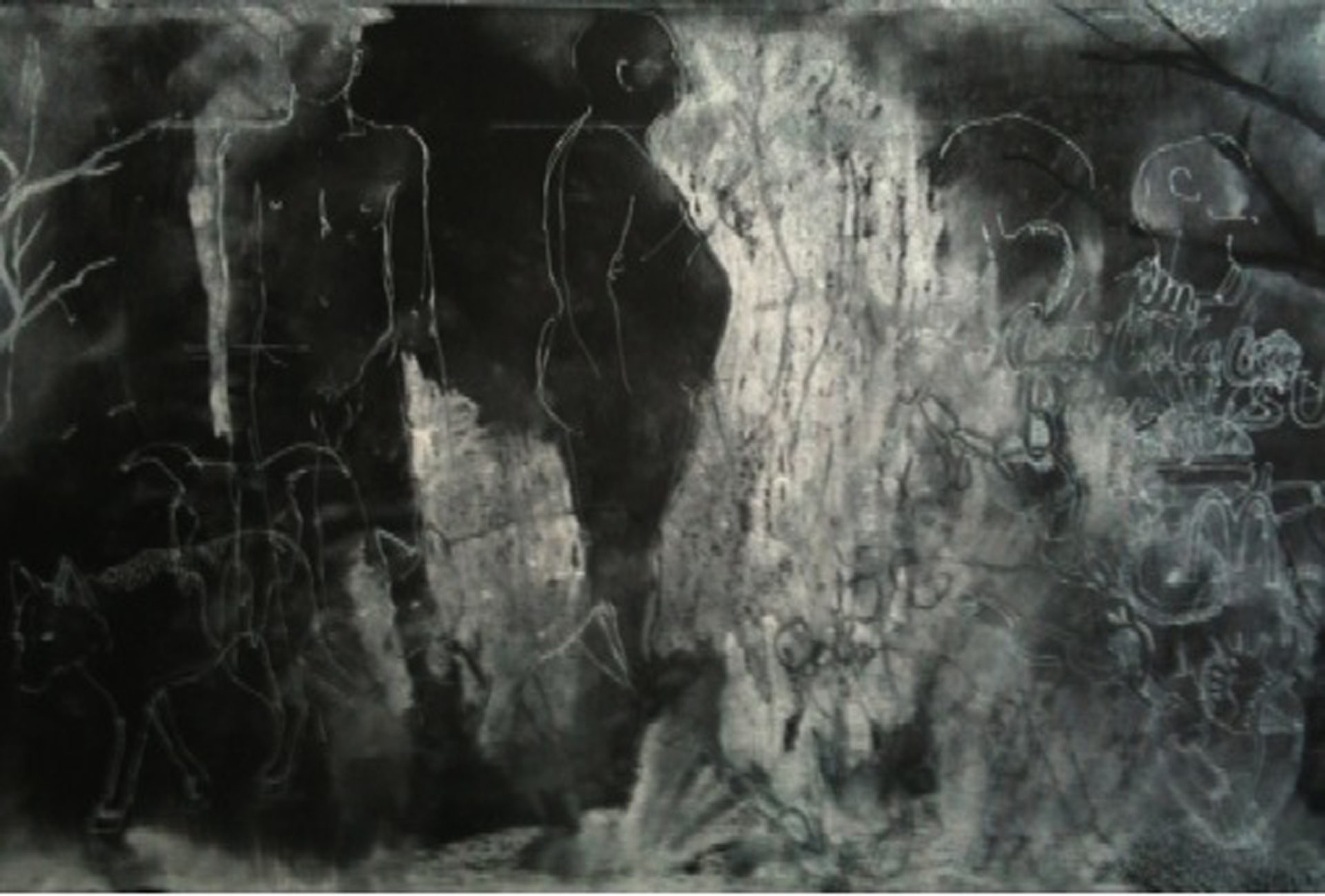Speaking to Mr. Barrett at a bariatric surgery clinic, it became evident that this belief not only affects how people view him, but also the way he perceives himself.
While always a large man, he had previously been fairly outgoing. Now he disliked leaving the house. The dynamic of his family was profoundly affected, he was worried about setting a bad example for his two sons and made jokes about how his wife no longer found him sexy. These jokes were pointed, and I thought, based on genuine concern. Mr. Barrett felt a lot of self-loathing which stemmed from the idea that he was weak and had done this to himself. Because of this shame he never ate in public, and was anxious about what people were saying about his body, which he viewed with disgust.
I kept a sketchbook for a week and documented all the things in my immediate environment associated with food intake and obesity. I wanted to better understand the obesogenic society often blamed for the epidemic. This practice forced me to become very mindful of what I ate, my surroundings and to pay attention to cues to eat within the environment, whether this was from advertisements, social contacts or supermarkets. I think normally I would have barely noticed some of these triggers and moved through them on autopilot. I documented images of food wrappings, soft drinks and two-for-one signs and so on. I also referenced medical images such as histology slides of fat cells and drawings of the heart and blood vessels from my dissection classes and illustrations drawn on disposable paper plates, showing the consumption of food – lurid, energy rich food, and then images depicting the leftovers of the meal. I wanted to communicate how cheap and strange this food is.
I then created an illustration to explore this complex relationship between a person and their environment. ‘Eat Less’ is the painfully obvious and arguably useless advice often thrown at obese people. By demonstrating the complexity of the disease, the illustration suggests how ineffective the words ‘eat less’ can be. This final drawing features an obese man standing in side profile and surrounding him are factors and interactions which influence his disease. He is facing towards the right, where I have tried to convey the constant exposure to energy rich foods characteristic of modern existence. The overlapping, layered images are taken from my sketchbook, they communicate how relentless and overwhelming this experience is. Chains are drawn across the page, linking his body to the things he consumes and his environment. I wanted to show that the man is not an isolated entity. He is chained to all the influences from his surroundings and in turn, he affects them. On the left of the illustration are line drawings which evoke the lifestyle that his body and mind was designed for.
Drawing image on top of image means that the sketches are obscured by lines and layers of chalk dust. The viewer has to spend time and attention in order to decipher individual pictures from the build-up of images. This mimics the way that a clinician has to concentrate in order to make out the different levels of interaction and systems affecting a patient.
Eat Less
Obesity is a self-inflicted illness which stems from the individual’s loss of willpower, control and character – this is a widely held public perception.
GP Attachment, Year One, 2012

0 Comments